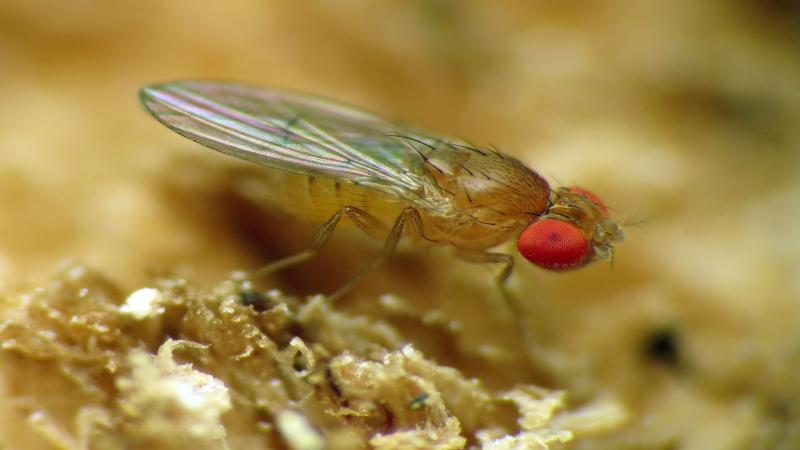
Disgusting, annoying or beneficial? What would you call these pestering fruit flies that don’t miss an opportunity to sit on your favourite cut fruit or visit your kitchen a few times? Whatever you call them, did you know we owe a great deal of our knowledge on evolution to these pesky flies? Ever wondered what’s the lifestyle of Drosophila melanogaster, as they are scientifically called, within the four walls of a laboratory where they are experimented upon? Here is a sneak peek.

A sumptuous meal: Fruit flies in the lab are held in test tubes and are fed a mixture of molasses, cornmeal and jaggery. In nature, fruit flies are attracted to anything that is sweet and has glucose. Since they cannot be let out in the lab to forage for themselves, the mixture provides the required nutrients for these flies. Their food is well calibrated and the researchers follow a strict regimen of what is fed and when.

Handle with care: In the lab, fruit flies are stored in test tubes, like the one shown above. The mouth of the test tubes are blocked by a cotton plug so that these flies don’t fly out. The food is placed at the bottom of the test tube. A single test tube may contain tens of fruit flies.

Flies of similar genes flock together: When scientists grow fruit flies in the lab, they are carefully hatched in incubators and grown with known genetic traits. They are separated into large plastic boxes based, like the one above, based on their genes. This separation helps in experiments that are designed to look at the evolution of specific traits, like the colour of the eyes. Each of the batch of fruit flies are labelled meticulously to indicate the date of birth and other related information.

Drugged before the design: Conducting experiments on fruit flies is not easy. They need to be anesthetized prior to that by administering gases that induce a loss of consciousness in these flies. The gas is passed through small pipes into the test tubes that house these flies.

Dainty drosophila: The flies, although look hardy, have delicate wings. They are carefully moved into the test tubes using a paintbrush, as shown above, to not damage their wings. There have been many studies that look into the structure of the wings and their development. So, wings are one of the most studied organs of the fruit fly.

Dexterity is the skill: Apart from studying the evolution of different genetic traits, scientists also study how these fruit flies react to pathogens and infection caused by them. Hence, some of them are artificially infected in the lab to study them closer. Above, a small population of fruit flies are being carefully injected with bacteria. Data is then collected and observations regarding the reaction are recorded.

Melanogaster under the microscope: The desired parts of the fruit fly are studied closely under a simple microscope. Usually, they are kept on a surface that is white, as shown above. The white background provides good contrast to observe these flies precisely.
Photo Credits: Aishwarya Viswamitra
Acknowledgements: Prof. N G Prasad, Evolutionary Biology Laboratory, IISER Mohali.
Listen to Research Matters Podcast featuring Prof. N G Prasad.






